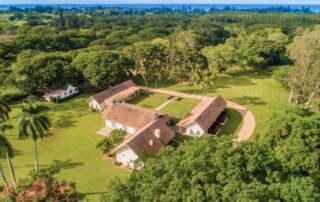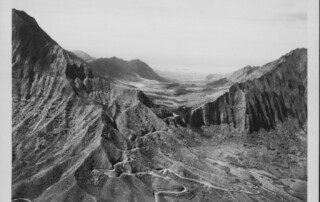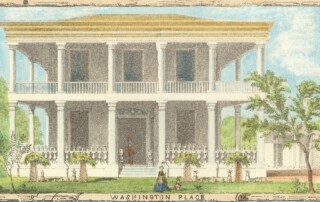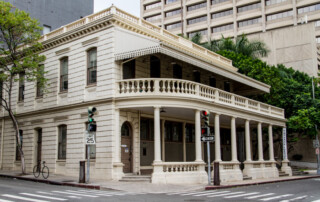Dillingham Ranch Celebrates 125 Years
Branches over the lane. Photo Courtesy: Dillingham Ranch. Dillingham Ranch is located on the beautiful North Shore of O‘ahu. It holds a deep and captivating history; let us take a look back in celebration of its 125th Anniversary! Hawai‘i Life’s Director of Conservation and Legacy Lands, Beth Thoma Robinson writes, "The traditional name for this ‘āina is Mokulē‘ia – which means ‘district of abundance.’ The North Shore is still referred to as The Country by O‘ahu residents who intend to keep it that way. This property (Dillingham Ranch) is embedded in a community with a strong sense of place.”1 Dillingham Ranch was established in 1897 by Benjamin Franklin Dillingham, who became Hawai‘i’s first railroad tycoon. In 1917, Dillingham’s son, Walter Dillingham, built Dillingham Lodge with the help of his siblings, Harold and Marion. Known as “Hawai‘i’s greatest builder,” Walter Dillingham is credited with shaping Dillingham Ranch into what it is today as well as changing the entire O‘ahu landscape.2 “From my father, I inherited the moving vision that saw these islands prosperous.” Walter Dillingham Dillingham Ranch is a rare property, offering all of the charms and essence of Hawai‘i, from white sandy beaches to mountain terrain and acres of open green space scattered with coconut trees, monkey pods and rare plant species indigenous to Hawai‘i. Peacocks and ducks flutter around the grounds while horses and cows graze in the fields. Visitors can enjoy horseback riding, surfing, hiking and parasailing while experiencing local culture and history, all in one truly special place.3 Dillingham Lodge of the "Big House." Photo Courtesy: Dillingham Ranch. Through the generations, Dillingham Ranch has welcomed notable guests and sportsmen and has been home to many cattlemen and ranchers. [...]





